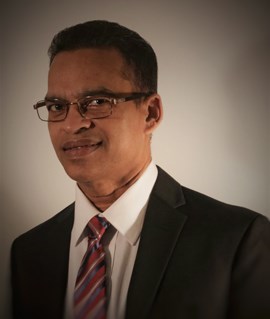Janice was mindful of the many different aspects when people communicate. With this learned from an early age she was able to communicate effectively. This helped her in grade school, college and throughout her career.
Janice had the amazing ability of listening to what others had to say and improving the communication of both parties.
By asking the right questions at the right time and through clarifying inquires she was successful in all aspects of her business and personal life. With experience, Janice also learned that body language plays a significant role to communication and learned to look for signs in others to find out more about them and their intentions.
Having a well-developed sense of confidence together with good communication skills can help a person do just about anything successfully.
Communication Skills:
Strong communication skills are essential for assertive interaction with others. Being social animals communication is a very important part of our daily lives.
Every interaction with another person, not limited to face to face, over the phone, chatting online or even texting is communication happening. Having strong communication skills will benefit every type of interaction we encounter.
Listening and Hearing --- They Aren’t the Same Thing:
Hearing is the act of perceiving sound by the ear.
Listening, however, is something entirely different, and is an act that one consciously chooses to do. Listening requires concentration so that your brain can processes meanings from words and sentences. Listening leads to learning, but this is not always an easy task.
The normal adult rate of speech is 100-150 words per minute, yet the brain thinks at a rate of 400-500 words per minute, leaving lots of extra time for daydreaming, or anticipating the speaker’s next words.
Opposed to hearing, listening skills can be learned and refined, and will allow you to fully receive a message from another person.
In situations involving anger or a tense interchange, active listening will allow you to be sensitive to the content and nature of communication that make up the entire message. These dimensions include:
The occasion for the message:What is the reason that the person is communicating with me now?
The length of the message:What can the length of the message tell me about its importance?
The words chosen:Is the message being made formally? Is it with aloofness or slang?
The volume and pace:Does the loudness and speed give me any clues?
The Pauses and Hesitations:How do these enhance or detract from the message?
Non-verbal clues:What does eye contact, posture, or facial expressions tell me about the message?
The ability to share and understand another's emotions and feelings is called empathy. It is the art of seeking a deeper understanding of how others think and feel
Stephen Covey, author of “The Seven Habits of Highly Effective People”, empathetic listening involves five basic tasks:
1. Repeat verbatim the content of the communication; the words, not the feelings
2. Rephrase content; summarize the meaning of the words in your own words
3. Reflect feelings; look more deeply and begin to capture feelings in your own words. Look beyond words for body language and tone to indicate feelings.
4. Rephrase contents and reflect feelings; express both their words and feelings in your own words.
5. Discern when empathy is not necessary – or appropriate.
6. Asking Questions.
Emphatic listeners use specific questioning techniques to elicit more information from speakers. Here are three types of questions you can use when practicing active listening.
Open Questions:
Stimulate thinking and open discussions and responses with open-ended questions. Such questions passes the responsibility of the conversation over to the respondent. Why?, What?, or How? Are some leading words to use when asking open questions.
For example: Can you tell me Howthe new employee on-boarding is going?
Clarifying Questions:
A clarifying question help you to expand the conversation by asking for additional details, without being judgmental and keeping back your own opinions. It helps to make room for clarity by removing the grey areas of ambiguity.
Once you ask your clarifying question, it is now your turn to listen carefully to what the response is from the other person.
Here is an example of a clarifying question: “Can I try to repeat your main concerns? What sort of savings are you looking to achieve?”
Closed Questions:
Are you looking for a one word answer? The ask a close-ended question.
These questions, accompanied with sarcasm, can end conversations abruptly. While they are not the best way to ask something of someone, they are designed to request facts from the speaker, and allow the one asking the question to maintain control of the conversation.
Here is an example of a close-ended question: “Who will lead the meeting?”. Answer: “Johnson.”
Body Language:
According to the UCLA, 93 percent of communication is determined by nonverbal; the impact of performance was 7 percent by the words used, 38 percent by tone of our voice, and 55 percent by non-verbal communication.
Without realizing it, we unconsciously send and receive non-verbal signals through body language all the time.
Our gestures, postures, and other physiological signs acts as cues to other people all the time. It is the process of sending and receiving wordless (body signals) messages.
It is more powerful than all the words we can ever say.
In a conflict between your words and your body language, your body language will determine the result every time.
Next week, in Part Four: ‘Importance of Goal Setting’; ‘SMART Goals’.
Again, thank you, and much success!
For more information on quality, affordable, world-class workshops offered, please email: [email protected].




